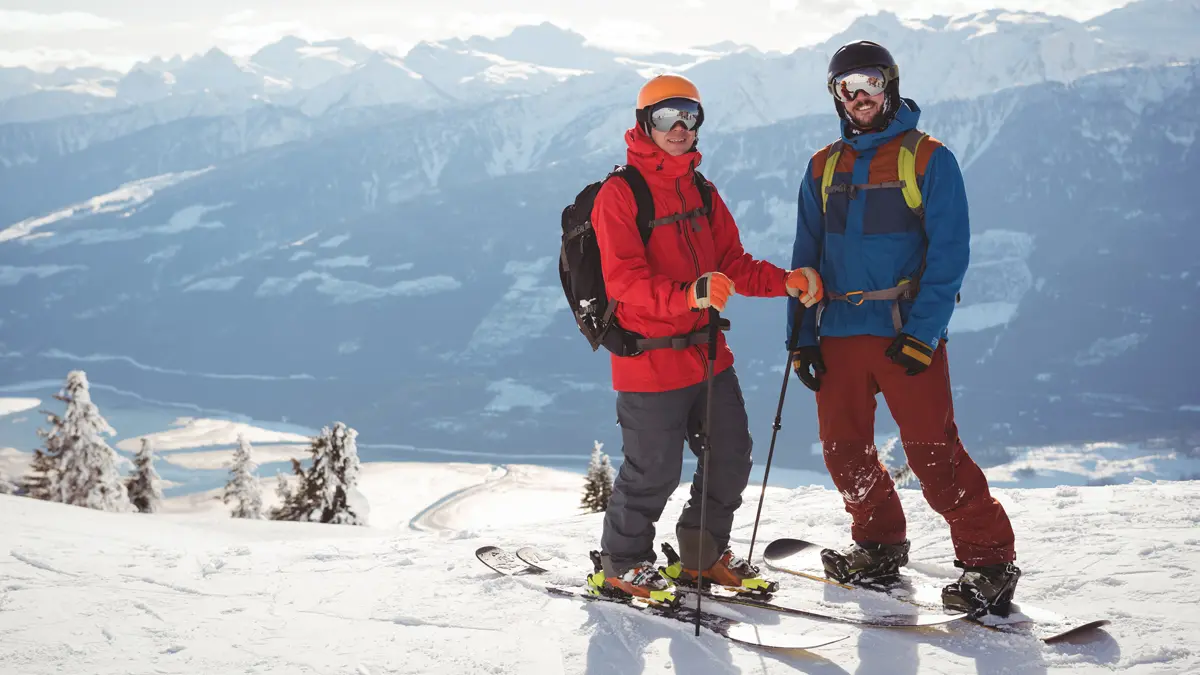Skiing is an extremely thrilling sport and needs a lot of practice to master the skill. At the same time, you must pay attention to what you wear to keep warm and dry. Ditch the usual hoodies and sloppy jackets and consider investing in proper skiing clothing instead. Here is what you should wear when skiing to protect yourself from injury and have the best experience.
1. Base Layers
Since you will be skiing in extremely cold conditions, you have to layer up to insulate your body from harsh weather. Both the top and bottom should be fitting and stick to your body to provide optimum warmth and completely insulate your body. Clothes made with wicking material are breathable and keep your body warm at the same time. In fact, you can buy a complete set of base layers that are specifically designed for skiing and are sold as thermals. Apart from insulating your body, they keep moisture and sweat away, thereby making it completely suitable for your skiing ensemble. Furthermore, make sure that it is high in quality as it is the most important layer of all and stay away from cheaper alternatives.
2. Mid Layer
Next comes your mid-layer, which is usually made of fleece and acts as another insulating layer to withstand extremely cold temperatures. You can either put on a fleece jacket or a t-shirt on top and a pair of fleece pants on the bottom. While it is not necessary to invest in a fleece jacket or pants, wearing them can provide optimum protection. Those on a tight budget often prefer to put on a normal jacket or jumper. Similarly, cotton leggings or fitting trekking pants work for the bottom too. Irrespective of the material or type of clothing you wear, just make sure that you include a mid-layer in your ensemble.
3. Outer Layers
Just like the base layer, the outer layer is important too as it helps protect you against moisture and prevents cold from seeping in. Your outer layers should be waterproof and be able to repel extremely cold water and snow. Salopettes are ski trousers that shield your body against harsh weather and snow. While the bottoms are designed and sold separately, you can simply put on a thick and comfortable jacket for the top that will act as the outer layer. Since mountainous regions are prone to heavy snow, strong winds, and sleet, your outer layer should be designed with care. Furthermore, they should also prevent you from bruising your skin and friction burns if you fall or trip. In this way, you’ll have more peace of mind whenever you’re skiing.
4. Helmet
Since skiing is a dangerous activity, you should be careful and protect yourself from injures. Wearing a helmet is necessary as it keeps your head secure and protects it from extreme cold. You can either rent it or invest in fresh gear, depending on your needs and budget. Investing in a new helmet is highly recommended as you need one that fits you well and provides the assurance of complete protection. Since some places make it mandatory to wear a helmet during skiing, it is wise to carry one.
5. Goggles
Goggles weren’t always a popular accessory with skiers. With time, the importance of protecting your eyes from extreme cold, strong wind, and sunrays has popularized the concept of wearing goggles when skiing. While wearing normal sports sunglasses works, investing in a pair of skiing or snowboarding goggles will provide enhanced protection and comfort. The goggles you buy should have a layer of UV protection to protect your eyes from harmful sun rays.
6. Gloves
Ski gloves have also become a necessary addition to skiing gear and outfits. Your hands need protection against cold and should have a proper grip on the ski poles, which is where a pair of high-quality gloves can help.
While some skiers wear mitts, gloves are more comfortable and dexterous. Since ski gloves are easy to find and extremely affordable, you shouldn’t ignore them when assembling your skiing outfit. Just make sure that they are waterproof and provide proper grip.
7. Ski Socks and Boots
Lastly, you need comfortable ski socks and boots for proper form and technique. Ski socks keep your feet warm and prevent snow from getting in. It is wiser to layer up with a few pairs of ski socks for further protection. Since ski socks are breathable, they provide optimum comfort. Your shoes should also provide proper grip when walking on snow. Invest in ski boots as the outer shell is hard and supports the skis.
Focusing on your skiing ensemble is of the utmost importance as it will determine how comfortable you are when you are skiing. Do not forget to wear sunscreen as you will be spending a lot of time outdoors. Most importantly, layer up as much as you can to keep the cold away.
